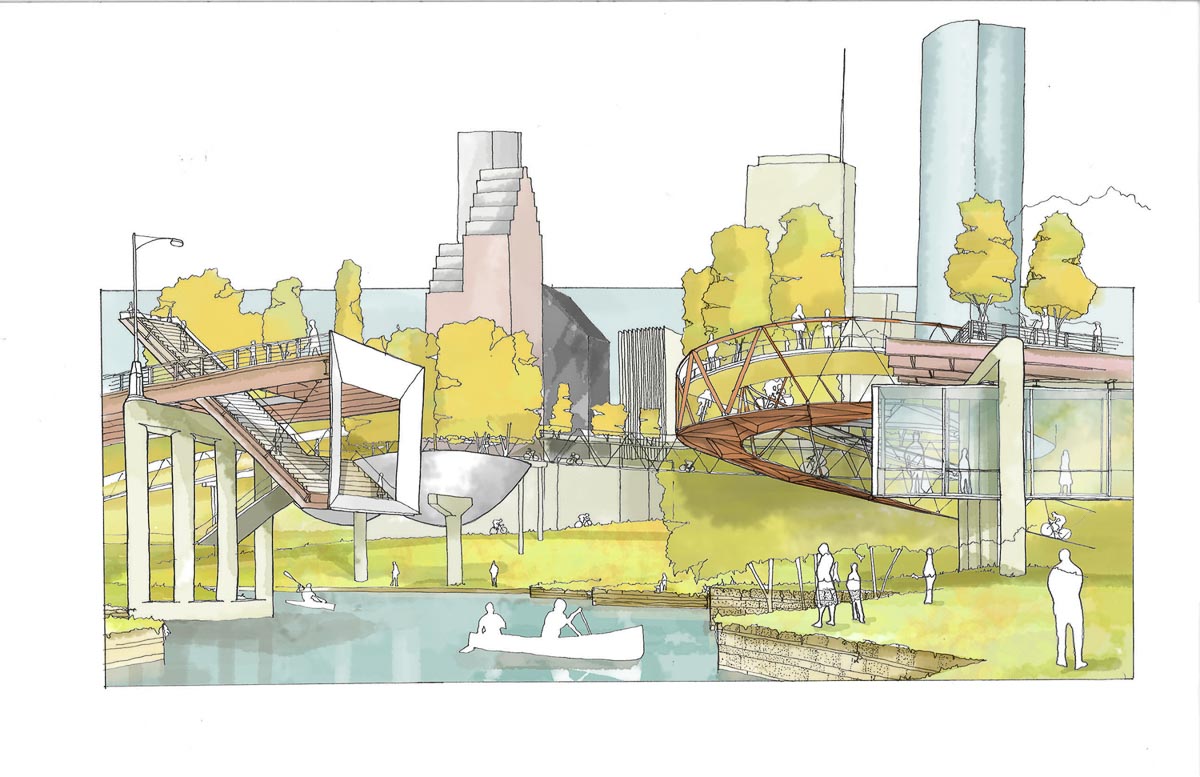In 1982, John Cryer, the former CEO of Page, an architecture and engineering firm, and his friend, Bob Eury, planted oak trees around a parking lot that would later become Discovery Green, the urban park housed smack dab in the middle of Houston's entertainment district. The oak trees are still there and the park is thriving.
Discovery Green is Houston's prime example of repurposing an existing element — in this case, a parking lot that sat vacant — and turning it into a public space, one used to build community and produce profit.
Marcus Martinez, senior associate of Design at Page, says the company again wants to invest in an asset the city already has: the Pierce Elevated, the elevated stretch of I-45 that runs along the southwest side of downtown. That bit of road is scheduled to be abandoned, as I-45 is rerouted to run parallel to I-69. Martinez, along with Cryer and Page Senior Architect Tami Merrick, are spearheading an idea to turn the soon-to-be-abandoned freeway into a park, now dubbed the Pierce Skypark.
"It's an opportunity," said Cryer, one of the architects in charge of renovating Buffalo Bayou Park, including the Cistern. "If the city can acquire it, it can be repurposed into something interesting and exciting."
The Cistern is a good example of an infrastructural reuse in Houston gone right, according to Cryer. Originally, the Cistern was planned to be turned into a parking garage or be dug up. Cryer suggested turning into what it is today.
"The idea was to create opportunity so that people could experience it," Cryer said. "They have made so much money on that thing; a thing that somebody thought was worthless."
That same mindset applies to the Pierce Skypark. Martinez, Merrick and Cryer are on a mission to put the idea of the Pierce Skypark — they are adamant that it's an idea, not a concept — in front of as many government officials, community organizers and stakeholders as possible. They want the idea to stick.
Martinez said the city's mentality of tearing stuff down and building it up new again doesn't apply to this. "We just want to invest in an asset that we already have," he said.
Drawing inspiration from the High Line in New York City, the Pierce Skypark wants to add to successes of its predecessors, as well as learn from its failures.
"We're trying to find a way to do it Houston's way," Martinez said. "We want to make sure to do it in a way that benefits the city well into the future. It's a legacy move."
But convincing Houstonians that transforming a 1.97-mile concrete freeway into 37.7 acres of green space, complete with bike paths and opportunities for retail, is one of the biggest challenges Merrick says the group has had so far.
"The problem is always getting through the visual of the freeway," she said. "You've got to get over the fact that it's just a concrete structure. Yes, it can be green. Yes, there can be something underneath it, something around it. It's more of a trellis, because it's not a solid thing. Once you have activity on the ground plain and you allow activity to occur, it'll become a community center and build that social equity."
"We can't say infrastructure is bad because it has made our city," Martinez said. "It has been the engine of change to bring the city to what we know today. But now, it's our responsibility to guide that next step."

